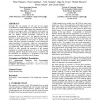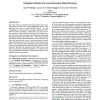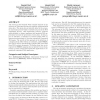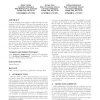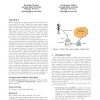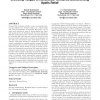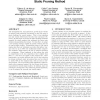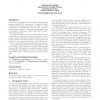WWW
2005
ACM
15 years 7 days ago
2005
ACM
Currently, the vast majority of web sites do not support accessibility for visually impaired users. Usually, these users have to rely on screen readers: applications that sequenti...
WWW
2005
ACM
15 years 7 days ago
2005
ACM
The reasoning tasks that can be performed with semantic web service descriptions depend on the quality of the domain ontologies used to create these descriptions. However, buildin...
WWW
2005
ACM
15 years 7 days ago
2005
ACM
RDF is increasingly being used to represent metadata. RDF Site Summary (RSS) is an application of RDF on the Web that has considerably grown in popularity. However, the way RSS sy...
WWW
2005
ACM
15 years 7 days ago
2005
ACM
This paper discusses generating document structure from annotated media repositories in a domain-independent manner. This approaches the vision of a universal RDF browser. We star...
WWW
2005
ACM
15 years 7 days ago
2005
ACM
The success of the Semantic Web crucially depends on the existence of Web pages that provide machine-understandable meta-data. This meta-data is typically added in the semantic an...
WWW
2005
ACM
15 years 7 days ago
2005
ACM
As an increasingly large number of OWL ontologies become available on the Semantic Web and the descriptions in the ontologies become more complicated, finding the cause of errors ...
WWW
2005
ACM
15 years 7 days ago
2005
ACM
Search engines are the primary gateways of information access on the Web today. Behind the scenes, search engines crawl the Web to populate a local indexed repository of Web pages...
WWW
2005
ACM
15 years 7 days ago
2005
ACM
Focused Web browsing activities such as periodically looking up headline news, weather reports, etc., which require only selective fragments of particular Web pages, can be made m...
WWW
2005
ACM
15 years 7 days ago
2005
ACM
The unarguably fast, and continuous, growth of the volume of indexed (and indexable) documents on the Web poses a great challenge for search engines. This is true regarding not on...
WWW
2005
ACM
15 years 7 days ago
2005
ACM
Server-side programming is one of the key technologies that support today's WWW environment. It makes it possible to generate Web pages dynamically according to a user's...
